The history of plastic recycling numbers
There are seven numbers (also referred to as codes) used in the international classification and recycling of plastics. These are known as Resin Identification Codes, or RIC, and were developed by the Plastic Industry Association in 1988.
Click here to jump ahead to our guide on RICs and plastic recycling numbers.
Why were Resin Identification Codes introduced?
The plastic recycling numbers, or Resin Identification Codes, were created as a type of plastic recycling code for those working in the plastic and recycling industry. The code includes a number, which corresponds to a polymer used in a plastic product, helping to identify what plastic was used to create the item bearing the symbol.
The Resin Identification Code does not indicate that the product is recyclable. Instead, it helps experts - like Vanden – to identify the polymer used, to then decide whether it is suitable for recycling.
When it comes to post-industrial plastic scrap, offcuts and redundant stock, the majority of the polymers listed under these plastic recycling numbers can be recycled, providing they do not include additives or barrier layers, and that they are kept clean.
To learn more about ensuring your post-industrial plastic scrap achieves its true value, download our whitepaper:
Get The Best Value From Your Plastic Scrap
What about plastic recycling numbers for post-consumer plastic waste?
Where post-consumer waste is concerned, facilities vary between regions. This means that there is not a standardised approach when it comes to post-consumer plastic recycling, and individuals should enquire with their local authority.
To provide further assistance in the consumer-facing arena, a new set of codes have been introduced by The Sustainable Packaging Coalition. The How2Recycle system provides clear information and instructions on treating specific items. To improve the current plastic recycling rate, it was decided a simpler set of codes were needed. You can find more information on How2recycle codes here.
In this guide we specifically look at the Resin Identification Codes that are used by the plastics and plastics recycling industries to determine the type of polymer used, and its recyclability.
The Vanden guide plastic recycling numbers:
Below we have listed each of the numbers listed in the Resin Identification Code, explaining the applications and properties of each polymer type.
Should you have any further questions, or would like to learn more about the post-industrial plastic recycling solutions that Vanden Recycling provide, please contact a member of the team today.
| Symbol | Example | Polymer | Commonly used for | Properties |
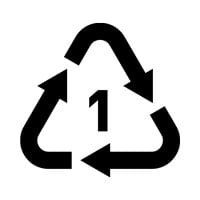 |
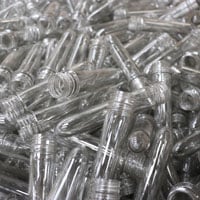 |
Polyethylene terephthalate | Water bottles, soft drinks bottles, sports drinks bottles, meat and fruit trays and punnet, sports equipment. |
Moisture resistant, chemical resistant, highly flexible, lightweight, shatterproof, strong, transparent. Learn more about polyethylene and our recycling services on our PET page. |
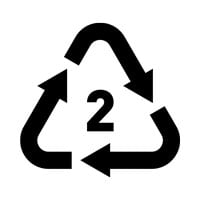 |
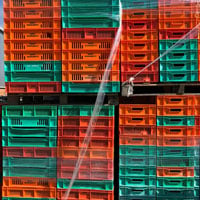 |
High-density polyethylene & Medium-density polyethylene |
Milk bottles, high volume water containers, domestic cleaning product packaging, food packaging, automotive manufacturing, signage, pipes, outdoor furniture and play equipment, crates, totes and boxes, sports equipment, road barriers |
Moisture resistant, chemical resistant, flexible, tough, high-tensile strength. Learn more about high-density and our recycling services on our HDPE page or MDPE page. |
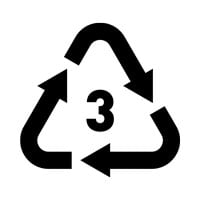 |
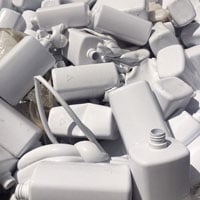 |
Polyvinyl chloride | Pipes, guttering and downspouts, windows and doors, wheelie bins, flooring, chemical cans, cable insulation, signage and medical equipment. |
Dense, durable, water resistant, chemical resistant, impact resistant. Learn more about polyvinyl chloride and our recycling services on our PVC page. |
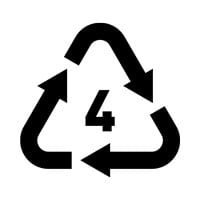 |
 |
Low-density polyethylene |
Carrier bags, shrink wrap, film for food packaging and drinks bottles, caps and lids, pipes, kitchen surfaces, prosthetics. |
Moisture resistant, high-impact strength, excellent insulation properties, flexible. Learn more about low-density polyethylene and our recycling services on our LDPE page. |
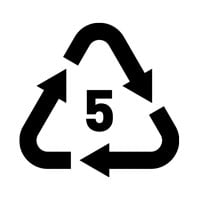 |
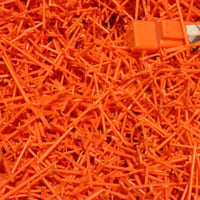 |
Polypropylene | Plastic hinges, electrical cable insulation, automotive and white good manufacturing, buckets, crate and pipes, packaging. |
Moisture resistant, chemical resistant, heat resistant, semi-rigid, translucent, tough. Learn more about polypropylene and our recycling services on our PP Page. |
 |
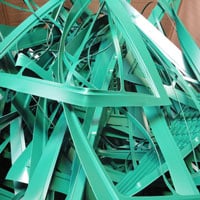 |
Polystyrene | Credit and loyalty cards, food packaging, horticultural trays and labels, automotive and white good manufacturing and medication bottles, moisture resistant. |
Rigid, transparent, flexible. Learn more about polystyrene and our recycling services on our PS Page. |
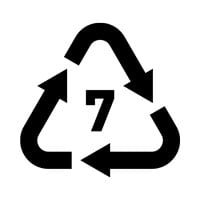 |
 |
All other plastics (including Acrylic, polycarbonate, ABS) | Automotive headlights, baby bottles, white good and domestic appliances, safety screens, bullet proof windows, rigid luggage. |
See more information on the following pages: |




